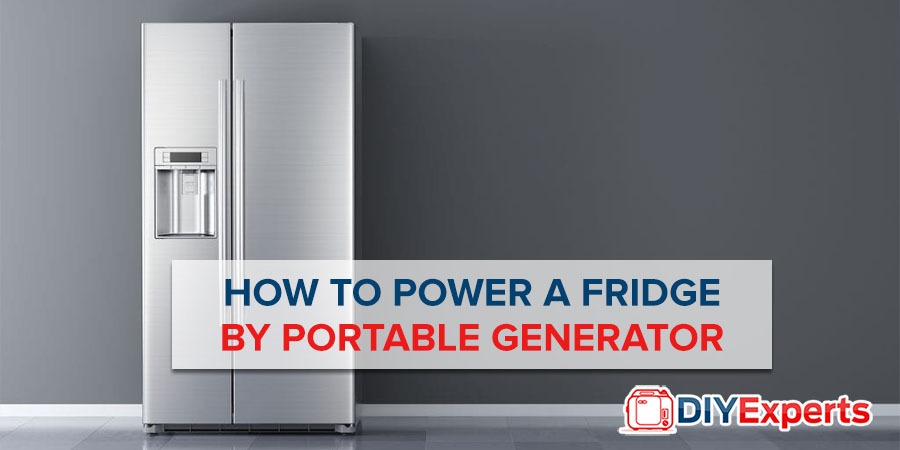 Have you ever wondered, what happens when there is a relentless power outage for days or hours on end in your area; what will you do? What if you have stocked up a large amount of food in the freezer or refrigerator, probably expecting visitors? Of course, you can lose all these in a fleeting moment. The party can be completely spoilt when all the food goes bad!
Have you ever wondered, what happens when there is a relentless power outage for days or hours on end in your area; what will you do? What if you have stocked up a large amount of food in the freezer or refrigerator, probably expecting visitors? Of course, you can lose all these in a fleeting moment. The party can be completely spoilt when all the food goes bad!
How, then, can you salvage such a situation? Yes, you guessed it right; an emergency generator is the obvious answer. Indeed, if your area is prone to frequent power outages, then you just need to buy an electric generator. Once you do this, you should practice using it, periodically, as emergency power source for the freezer or refrigerator. So, then, how can one successfully power a refrigerator using a generator? To get this, we first need to deal with some few wattage issues.
How do you calculate the average Wattage that a Fridge Uses?
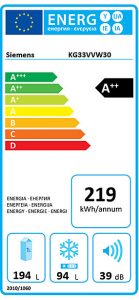 It can be difficult to imagine life without a fridge. With a fridge, everything is well cared for. You don’t need to rush to the grocery store daily in order to prepare food. The fridge saves you from this hassle by keeping the cheese cool, the meat ever fresh and the veggies crisp and edible!
It can be difficult to imagine life without a fridge. With a fridge, everything is well cared for. You don’t need to rush to the grocery store daily in order to prepare food. The fridge saves you from this hassle by keeping the cheese cool, the meat ever fresh and the veggies crisp and edible!
Indeed, have you ever cared to think how life on earth would be if no one invented the fridge? We are so used to these everyday conveniences that we may fail to notice that the fridge exists in the kitchen or living room.
You have probably never considered the amount of power needed to run the fridge or mini fridge. It is possible to know the exact wattage that is used by your fridge or mini fridge. We will endeavor, in this article, to show you a simple functional formula that you can use to do your calculations. Besides, we will offer a few tips that can help you use power sensibly and make a few savings.
Simple formula
If you want to know how many watts are used by a fridge, you can do that pretty easily. The formula for determining wattage is really simple: volts x amps= watts.1. Actually, just by looking inside your fridge, you can see how many volts and amps the fridge uses. Usually, there is a sticker placed inside the refrigerator wall that contains this information.
Simple Math
You will find the sticker containing technical specifications, near the front of the machine. The volts may be listed as VAC while the amps are simply listed as amps. Remember that alternating current means the kind of electricity that we ordinarily use to power our homes.
An illustration will help us here: Supposing you own an older fridge. It lists 7 amps and 115 VAC. How many watts dos it use? To get the answer, simply multiply 115 VAC times 7 amps. The answer comes to 805 watts.
It is notable that most new fridges just use between 100 to 200w. These include the energy star certified category of fridges. For this reason, it is worth investing in a brand new fridge that will prove to be energy efficient and, therefore, a money saver.
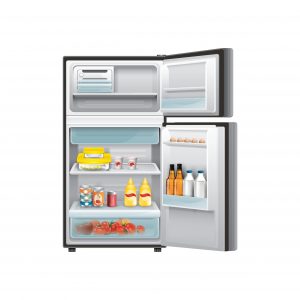
Mum was right
Did your Mum ever tell you repeatedly to close that fridge door and you thought it was crazy? Well, it wasn’t. Instead, she was right and you were wrong. It has been noted that wattage consumption for a regular-size fridge can rise astronomically, right up to 1,200 watts, with the compressor kicking in.
What steps can you take to significantly reduce the energy consumption for your home fridge? Here are a few practical tips that you can use.
Tips for controlling power consumption in your fridge
- Do not put the fridge near a source of heat. This means the fridge should not be placed near the oven or next to a sliding glass door. Such a door can let the sun shine in, leading to increased consumption.
- Do not linger whenever you open the fridge door. Quickly take what you wish to take and close the fridge door as fast as possible to reduce power wastage.
- Do not leave the fridge cooling empty space. This will simply lead to higher power consumption since the fridge will be working extra hard to ensure the empty space cools. Always fill the freezer to at least ¼ full. If possible, use the fridge at full capacity.
- When putting items in the fridge, make sure the items are already cool. Otherwise ensure they measure up to room temperature, at the least.
What about a mini fridge, how much power does it consume? Let us find out.
How Much Power, in Wattage, Does a Mini-Fridge Consume?
If you need to determine wattage that is used by a mini fridge you can do so easily. Our formula for calculation remains the same. Actually the lower wattage model of refrigerators usually consumes 85 to 100 watts. This they do while running at. 4. However, most fridges can do up to 250 watts.5.
You need to learn how to control the compressor for your mini fridge so it doesn’t turn on often. When this happens, the starting wattage is boosted. So what should you do to prevent this? Here are some practical tips that you can use:
Tips to Control activity of fridge Compressor
- Always put your mini-fridge somewhere in the open. Avoid putting it in an enclosed place like the cupboard.
- Do not put your mini-fridge near a direct source of heat. This means you should avoid placing the machine near such objects as a space heater or near a window which can allow sunshine through.
NB: Often, you might find that a regular-size fridge will do just fine for you and for your pockets! With this, you can always cool more things. Moreover, you will likely find that the wattage difference between regular fridges and mini fridges is actually minor. Why, then, should you really need the latter? Unless you have special or personal reasons, a regular size fridge will do you good.
How Can you Connect Your Refrigerator to the Generator?
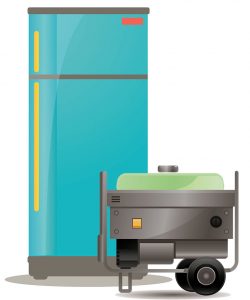 To connect your refrigerator to the generator, you can follow the following simple steps:
To connect your refrigerator to the generator, you can follow the following simple steps:
- Move the generator to a flat surface in the compound close to where the fridge is placed.
- Make sure the generator is located not less than 10 feet away from canopies, any overhangs, awnings and the structure.
- Plug the end of a 14-gauge cord into the generator power outlet.
- Connect the extension cord right from the generator and into the structure. In order to reach the refrigerator easily, do this through a window or doorway.
- Start the generator. Gradually allow it to come up to its normal operating speed.
- Now, unplug the refrigerator from the wall. Plug into the receptacle of the extension cord.
- Check and ensure that the refrigerator is starting and operating in the normal way.
Caveat
In your efforts to connect the generator to the fridge, ensure to avoid using extension cords that are skinny and merely meant for lamps. The reason is, such cords have the propensity to overheat and can, therefore, create a fire hazard.
It is notable that those who possess whole house generators are well catered for and may not need most of these measures to operate activities at home. On the other hand, those who use inverter generators can simply connect the fridge to generator, using any of the practical tips offered here. When doing this, however, make sure that the machine has enough power packed in. How can you measure this power, though? We need to find out.
How Can I Know Which Portable Generator is Powerful Enough?
First, remember that a generator that is in the middle ranges will effectively power any decent-sized fridge. It, however, depends on the kind of fridge you use. Do you also wish to power other gadgets at the same time? Consider the following options:
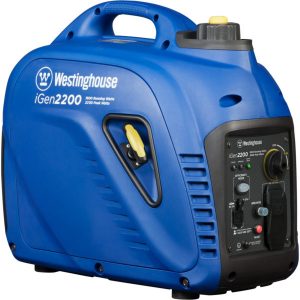
Westinghouse iGen2200
With this powerful machine, you can actually have your refrigerator running for a good 10 hours, with no need to refuel the generator. Westinghouse generator is also a super quiet portable generator. It produces only 52db sound, working at a ¼ load. It can power multiple gadgets and contains many useful consumer features.
Read our full Westinghouse iGen2200 Review
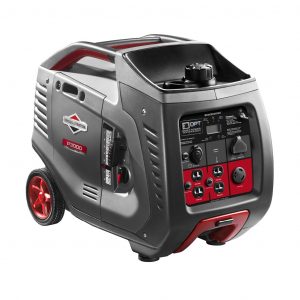
Briggs & Stratton 30545 P3000
This generator is great for powering multiple devices at the same time. It has a 12volt locking feature, a USB port and 4-hold outlets. It works at 3,000 watts starting and 2,600 watts running. You can easily read all performance matrix using the great integrated LCD screen. It has a 10 hour run time at ¼ load. No need to worry about constant refilling of fuel. It is pretty quiet, producing just 58 decibels at ¼ load.
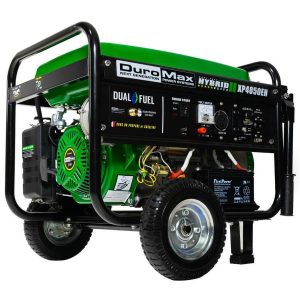
Duromax XP4850EH
Duromax XP4850EH is a powerful dual fuel generator. With this machine, most fridges of average wattage are guaranteed to continue running for more than 16 hours. There will be no need to refuel the generator during this time. This is certainly a superb machine to use with your refrigerator during times of power crises.
Read our full Duromax XP4850EH Review
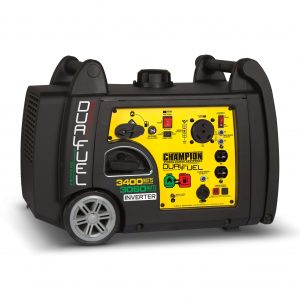
Champion 3400-Watt Dual Fuel Inverter Generator
It is always good to have a generator that is capable of producing more power. This works well whenever you need to power other appliances. Most ordinary refrigerators usually need between 2200 starting and 700 watts running. The above generator has duel fuel capacity, meaning it can run on both liquid propane and gasoline. This can be invaluable when gasoline is scarce like during disaster.
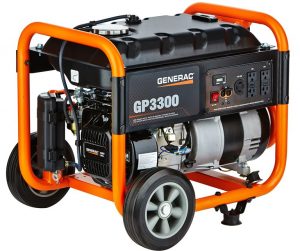
Generac GP3300 Portable Generator
It has just 100 watts less than Champion generator. It is pocket friendly, coming at half price. It can do 3,750 watts starting and 3,300 watts running. It easily powers a refrigerator and other appliances simultaneously. It doesn’t matter if you have little experience with generators. This one will keep you ever safe due to its great safety features.
Conclusion
Without doubt, it can be very risky to overload your generator, since this can lead to machine damage, start a fire or cause physical harm to the user. It is good advice never to try and guess the wattage capacity of your generator or fridge. Just take a little time to research and get the right model number and accurate wattage.
Good enough, a refrigerator can be easily powered using a properly equipped generator. Go ahead and do a little research to determine your fridge’s wattage requirement and the power limits possible for the generator. Take caution to confirm that your generator has capacity to handle the refrigerators’ starting and running watts before plugging in.
Certainly, obtaining a right portable generator that appropriately supports your fridge’s starting and running watts gives you the needed solution in times of crisis. Choose your generator carefully and wisely. Obviously, this post could not cover everything in this topic. Do you have any new suggestions or questions that can help users power their refrigerators better, using a portable generator? Kindly offer these in the comments section below.





Hi Alexey, very intersting article! Just got a 35h power outage some weeks ago and realize that I need to have a backup plan with our 2 Freezers+1 fridge+1 90Gal Aquarium! Just bought 2 small inverter generator 2100w/1700w with a parallel kit. I’m working with engineers for industrial industries. Then as I was planning to buy good sizes power cord (50ft-10/3cord) to bring the 30 amps L5-30R in the middle of the house before spreading it with smaller ones to each of the appliances. One guy told me I can’t do this that way even if I use the end cord with 20 amps integrated breakers from generators manufacturer (Firman model 1101) as my appliances should be on 15 amps circuit… He told me I need to buy a small breaker panel with 15A breakers ending to outlets and start my cord from there!
Much more work, trouble and money I was expecting to spend…
I’m really asking me if this guy was not going too far and in an temporary situation it could not simply be acceptable to connect my 15A appliances into 20A circuit cord?
I’m very interested about your opinion about this.
Regards, Andre M.